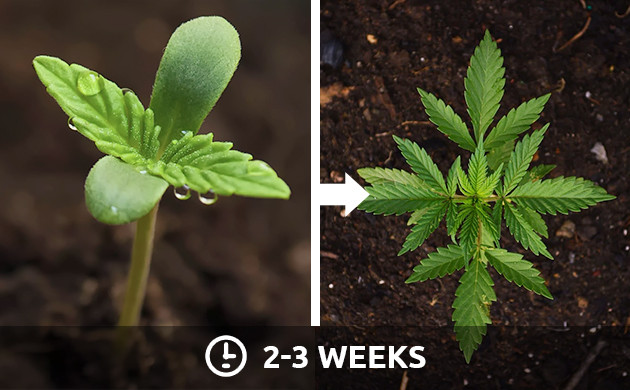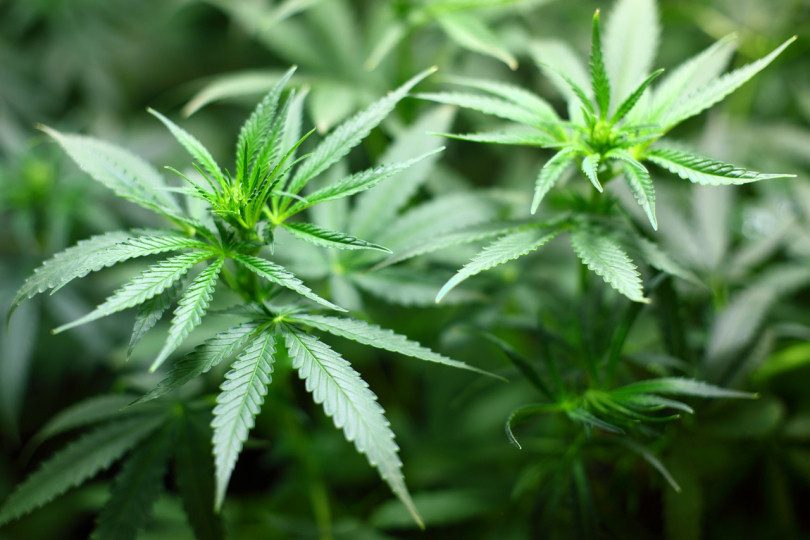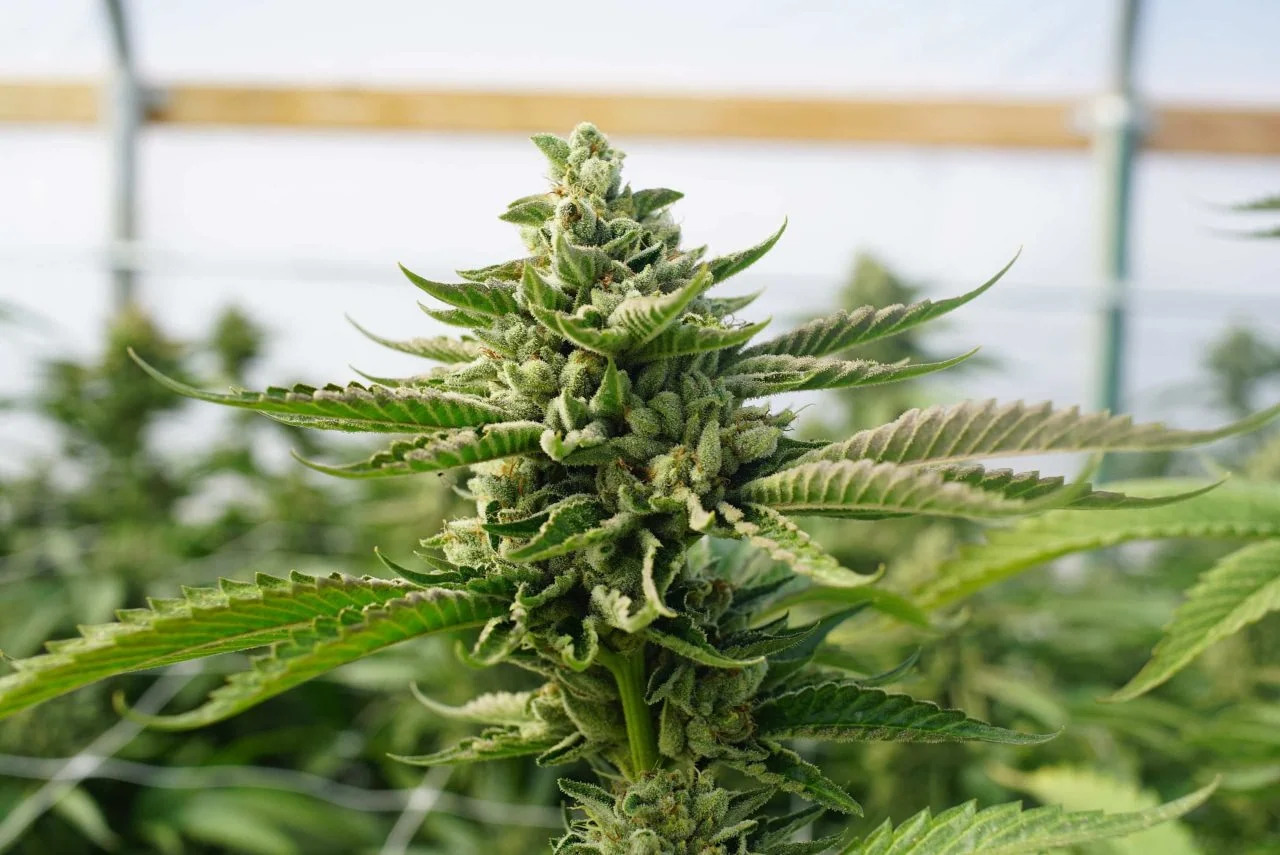How Long Does It Take For a Cannabis Plant To Mature?
Growing a cannabis plant from germination to harvest can take anywhere from 10-32 weeks or around 3-8 months. The amount of time it takes for a cannabis plant to mature depends on several factors such as the strain you choose, the growing environment, and the techniques used.
The most variation in how long a cannabis plant takes to grow occurs during the vegetative stage when plants are developing their root systems and foliage. Starting with a clone or an autoflower seed will speed up the process. Indoor growers may push their plants to blossom after only a few weeks depending on their size.
When growing outdoors, producers are at the mercy of the seasons and must wait until the sun sets in the fall for plants to blossom and harvest. Outdoor producers may manage their blooming cycle by adopting light deprivation tactics that prompt flowers early or creates short vegetation periods which allows them to flower earlier than traditional outdoor crops.
Breakdown Of Cannabis Growth Stages
The process of growing cannabis can seem less complex when broken down into four main stages: seed germination, seedling, vegetative growth, and flowering. Understanding the specific needs for nutrients, light, and water at each stage is crucial for successful cannabis cultivation.
While even experienced growers can continue to learn and refine their techniques, providing optimal growing conditions at each stage is key to a healthy and thriving cannabis plant.
Cannabis Germination Phase (2-10 days)

The cannabis germination phase is the critical first stage of development for a cannabis plant. During this time, the previously dry and hard seed will break from its dormancy state and begin to take in water in order to start growing. Generally, germination can last anywhere from two to ten days depending on many factors like the moisture content of the soil, the type of seed being used, temperatures, and more.
This can be an exciting time but also one that requires extra attention and care as any deviations during this phase may compromise subsequent development and even stop growth altogether.
In order to provide optimum conditions for your seeds you should make sure they are kept moist yet never drenched while keeping them in a dark space free of fertilizer or other additives. The wet conditions weaken the seed shell which allows the roots to emerge and provides a gateway for essential micronutrients needed for growth such as nitrogen, phosphorus, calcium, and magnesium obtained from the soil or air.
If you maintain optimal environmental factors such as temperature (65° – 85°F), humidity (50-60%) and adequate light (not direct sunlight) your cannabis will progress through this stage without issue hopefully resulting in strong healthy plants that are ready to face what’s next!
How Long Does It Take To Germinate Cannabis Seeds?
The time it takes for cannabis seeds to germinate can vary depending on several factors, including the type of seed, the temperature, and the humidity levels. Generally, it takes anywhere from 24 to 72 hours for cannabis seeds to sprout, with the average being around 48 hours.
However, it’s not uncommon for some seeds to take longer, especially if they are old or of poor quality. Once the seed has germinated, it typically takes another 7 to 10 days for the seedling to develop its first set of leaves.
Can You Speed Up The Germination Process?
Yes, there are several ways to speed up the germination process of cannabis seeds:
- Soaking seeds: Soaking seeds in water overnight before planting can help speed up the germination process. This allows the seeds to absorb water, which helps to activate the growth process.
- Warmth: Cannabis seeds germinate faster in warm temperatures, typically between 70-85°F (21-29°C). Placing a heating pad or using a seedling heat mat under the planting tray can help to maintain the optimal temperature for faster germination.
- Moisture: Keeping the seeds moist during the germination process is important. Use a spray bottle to mist the seeds regularly, or place a layer of moist paper towels over the seeds.
- Light: While cannabis seeds do not need light to germinate, once they have sprouted, they do need light to continue growing. Provide bright, indirect light or use grow lights to give the seedlings the light they need.
By following these tips, you can help ensure that your cannabis seeds germinate as quickly and effectively as possible.
Cannabis Seedling Phase (2-3 weeks)

The cannabis seedling phase is an inspiring and important step in the plant’s development. During this time, the newly sprouted plant will grow its traditional fan leaves, which contain between five and seven blades each.
At first, the seed will only sprout one ridged blade of leaves, and as it matures, extra fingers of leaves will appear. Once the marijuana plant has reached full-fledged fan leaves with all of its blades, we can then call it a mature plant.
During this time, growers should pay attention to their seedlings’ growth to ensure they are healthy and normal. This includes looking for bright green coloration – a sign that the baby plants are doing well. You may also notice slight variations in color due to environmental factors like soil composition or light levels.
It’s important to monitor these differences alongside other health indicators such as nutrient uptake or wilting leaves so you can act fast if any problems arise with your cannabis plants.
How Long Does The Cannabis Seedling Stage Last?
The cannabis seedling stage typically lasts for 2-3 weeks, although this can vary depending on several factors, including the strain of the plant, the growing conditions, and the overall health of the seedling. During this stage, the plant will develop its first set of true leaves and begin to put down roots.
Once the seedling has reached a certain size and strength, it will transition into the vegetative stage, where it will focus on growing leaves and stems.
What Does a Healthy Cannabis Seedling Look Like?
A healthy cannabis seedling will have certain characteristics that indicate it’s thriving. Here are some signs of a healthy cannabis seedling:
- Strong stem: The stem of the seedling should be sturdy and not easily bent. This is a sign that the plant is receiving enough light and nutrients to support healthy growth.
- Bright green leaves: The leaves of a healthy seedling will be a bright green color and will be free of yellowing or brown spots.
- Rapid growth: Healthy seedlings will grow rapidly, putting out new leaves and stems in a relatively short amount of time.
- Good root development: You should see roots growing out of the bottom of the planting tray or container. If the roots have filled the container, it’s time to transplant the seedling into a larger pot.
- No signs of stress or disease: The seedling should have no signs of stress, such as wilting or yellowing leaves, or any visible signs of disease, such as mold or pest damage.
If you notice any of these signs in your cannabis seedlings, it’s a good indication that they are healthy and thriving.
Cannabis Vegetative Phase (3-15 weeks)

Cannabis vegetative growth is a crucial stage for indoor growers that usually lasts between three and fifteen weeks. This is when the plant undergoes a period of vegetative expansion, with roots, branches, and leaves developing rapidly but no buds emerging.
During this stage, it’s important for indoor growers to provide 18-24 hours of daily light all the time regardless of whether they use autoflower or photo-period feminized cannabis seeds. This will facilitate photosynthesis and help ensure proper marijuana plant growth.
Nutrients are also essential during this vegetative phase as they aid in stimulating faster growth while providing strength to the roots and stems. Nitrogen-rich nutrients are especially beneficial as they have an immediate effect on some aspects of plant development such as leaf sets that become steadily larger over time, as well as new leaf sets appearing on the stem.
Additionally, cannabis plants require more water, light, and nutrients when they enter their vegetative stages so be sure to ensure your plants receive enough sunlight, adequate water levels are kept up at all times, and you monitor your nutrient levels often.
Read More: Cannabis Caterpillars
How Long Should a Cannabis Plant Stay In The Vegetative Phase?
The length of time a cannabis plant should spend in the vegetative phase depends on several factors, including the type of plant, the growing method, and the desired outcome. In general, the vegetative phase can last anywhere from a few weeks to several months, depending on the goals of the grower.
How Does a Healthy Cannabis Plant In Veg Look Like?
A healthy cannabis plant in the vegetative phase will have several distinct characteristics that indicate it’s thriving.
First and foremost, it should have strong, healthy stems that are sturdy and not easily bent. The leaves of a healthy cannabis plant in the vegetative phase will be a bright green color and will be free of yellowing or brown spots.
Additionally, you should see rapid growth, with new leaves and stems appearing regularly. During the vegetative phase, the plant will focus on growing leaves and stems and will develop a strong, branching structure.
A healthy cannabis plant in the vegetative phase will also have good root development, with roots growing out of the bottom of the pot and into the surrounding soil or growing medium.
Finally, a healthy cannabis plant in the vegetative phase should show no signs of stress, such as wilting or yellowing leaves, or any visible signs of disease, such as mold or pest damage.
By observing these characteristics, you can be sure that your cannabis plant is healthy and thriving in the vegetative phase.
Cannabis Flowering Phase (7-14 weeks)

The flowering stage of cannabis is an important stage in the life cycle of a cannabis plant as it is when the female cannabis plants start to produce buds and resin. The blooming stage follows the vegetative development phase and this change can occur automatically while growing autoflowering cannabis seeds.
When growing photoperiod feminized cannabis seeds, the daily light hours must be reduced to 12-12 light cycles in order for the bloom to begin. As autumn approaches, these feminized strains will detect the shorter daylight hours and begin to flower. In tropical climates, however, cannabis plants will usually detect short days instantly due to the warmer climate so blooming can begin much earlier on.
During the flowering phase of cannabis production, growers should look out for pollen sacs or “balls” that may appear on mature male plants (if they have not been removed). They should also keep an eye out for mold or powdery mildew which can easily damage and destroy buds if not caught early enough.
Additionally, correctly fertilizing your plants throughout this period will ensure that they remain healthy during their development into beautiful flowers with dense trichome coverage.
How To Tell If a Cannabis Plant Is Ready To Bloom?
Cannabis plants show numerous symptoms of blossoming and flowering. Key indicators:
Light cycle: Daylight duration is a major influence in cannabis plant blooming. Fall’s shorter days encourage blossoming in nature. Growers may set the light cycle to blossom inside. The plant will bloom after 12 hours of light and 12 hours of darkness.
Size and maturity: Cannabis plants bloom at a given size and maturity. Most strains blossom after many sets of leaves at a specific height.
Pistils: Cannabis plants’ reproductive organs, pistils, also indicate blooming. Pistils will develop at the base of the buds and get longer and more numerous as the plant flowers.
Scents: Cannabis plants emit strong, unique odors during blooming. Pungent, musky, or skunky odors vary by strain.
How Does a Healthy Cannabis Plant In Flowering Look Like?
A healthy cannabis plant in the flowering phase will have several distinct characteristics that indicate it’s thriving. Here are some key indicators:
- Flowers: The most obvious sign of a healthy cannabis plant in the flowering phase is the presence of buds, which are the flowers of the plant. The buds should be dense and well-formed, with a good amount of resin production.
- Color: During the flowering phase, the leaves and stems of the plant will start to change color, often taking on a deeper green hue. This is a sign that the plant is putting all of its energy into producing flowers.
- Aroma: As the buds mature, they will start to produce a strong, pungent aroma. This aroma will become increasingly intense as the buds mature, and will be a good indicator of the potency and quality of the final product.
- Resin production: A healthy cannabis plant in the flowering phase will produce a good amount of resin, which is the sticky, trichome-covered material that contains the plant’s active compounds. The more resin a plant produces, the more potent the final product will be.
- No signs of stress or disease: During the flowering phase, it’s important to keep an eye out for any signs of stress or disease. Healthy plants will show no signs of wilting, yellowing, or browning leaves, and will have no visible signs of mold or pest damage.
By observing these characteristics, you can be sure that your cannabis plant is healthy and thriving in the flowering phase.
How Tall Will It Grow?
The height that a cannabis plant will grow to depends on several factors, including the strain, the growing conditions, and the growing method. Some strains are naturally short and compact, while others can grow very tall and lanky.
The height of a cannabis plant can be influenced by several factors, including the amount of light it receives, the temperature, and the humidity levels. Additionally, the type of growing method used can also affect the final height of the plant. For example, plants grown using the Screen of Green (ScrOG) method tend to stay shorter and bushier, while plants grown using the Sea of Green (SOG) method can become taller and more columnar.
In general, indoor plants will grow to be shorter than outdoor plants, as indoor growers typically have more control over the growing conditions and can manipulate the light cycle and other factors to limit the plant’s height. Outdoor plants, on the other hand, will grow as tall as they can, limited only by the available sunlight and space.
The exact height of a cannabis plant will depend on the specific strain and growing conditions, but most plants will grow to be between 2-6 feet (0.6-1.8 meters) tall. However, some strains can grow much taller, reaching heights of 10 feet (3 meters) or more in ideal conditions.



